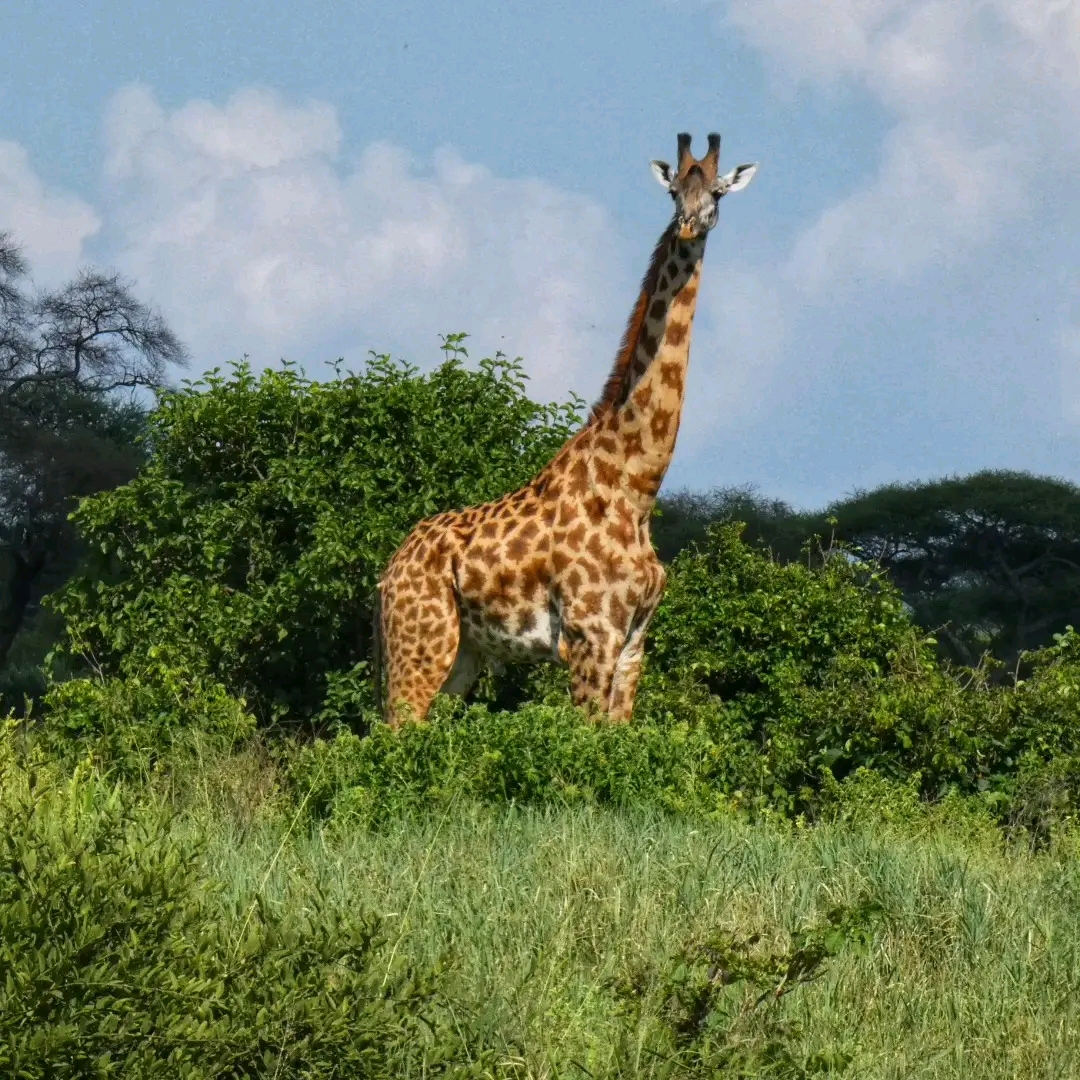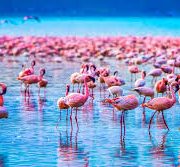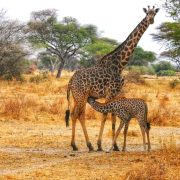
Ruaha National Park – Tanzania’s Hidden Wilderness Gem
Nestled in the heart of southern Tanzania, Ruaha National Park is one of Africa’s best-kept safari secrets. Spanning over 20,000 square kilometers, it is the largest national park in Tanzania and one of the biggest in East Africa. Despite its vastness and remarkable biodiversity, Ruaha remains relatively untouched by mass tourism, offering an authentic and wild safari experience that is both serene and exhilarating.
🌍 Untamed and Unspoiled
Ruaha National Park is a true wilderness destination untamed, raw and far from the crowds. Its landscapes range from baobab-studded hills and rugged escarpments to wide open plains, river valleys and dense miombo woodlands. The park is named after the Great Ruaha River, which flows along its southeastern border, attracting a diverse range of wildlife and serving as a vital water source during the dry season.
This breathtaking variety of habitats supports one of the most diverse and ecologically rich wildlife populations on the African continent, making Ruaha a paradise for nature lovers, photographers and serious safari-goers.
🐘 Land of the Giants – Massive Elephant Population
Ruaha is especially renowned for its large elephant herds, boasting one of the biggest populations of elephants in East Africa. These majestic giants can often be seen bathing in the river, crossing open plains, or gathering beneath the shade of baobab trees. Observing elephants in such natural and uncrowded surroundings is a powerful and humbling experience.
But the elephants are just the beginning.
🐾 Predator Stronghold
Ruaha is a stronghold for predators. It is home to 10% of the world’s lion population, with prides often numbering more than 20 individuals. The park is also one of the few places in Africa where all three of the big cats lion, leopard and cheetah roam in significant numbers. Sightings of African wild dogs (painted wolves), which are endangered and increasingly rare, are also a highlight of a visit to Ruaha.
Hyenas, jackals, and servals add to the predator diversity, making Ruaha one of the most rewarding parks for those interested in observing Africa’s carnivores in action.
🐃 A Safari of Diversity
Ruaha’s location at the crossroads of East and Southern Africa’s ecosystems results in a stunning mix of wildlife species. Visitors might see species typical of southern Africa, such as greater kudu, sable antelope and roan antelope, alongside East African species like Grant’s gazelle, giraffe and zebra.
The variety is staggering over 570 bird species, over 80 mammal species, and countless reptiles and insects inhabit the park. The dry season (June to October) is especially ideal for wildlife viewing, as animals gather around water sources and the vegetation thins.
🌄 Immersive and Scenic Landscapes
Ruaha is visually stunning. The vast savannahs dotted with giant baobabs, dramatic hills, rocky outcrops, and winding river systems create a picture-perfect backdrop for a safari. The Great Ruaha River, with its sandy banks and meandering flow, attracts a wealth of animals and offers great chances to see crocodiles and hippos basking or swimming.
The scenic isolation of Ruaha also enhances its charm. Unlike more frequented parks in northern Tanzania, you can enjoy game drives without encountering other vehicles a true luxury in today’s safari world.
🛖 Lodging and Safari Style
Ruaha offers a range of intimate, eco-friendly lodges and tented camps, often set in remote and scenic locations. These accommodations blend comfort with authenticity, offering immersive experiences like bush walks, night drives and cultural visits to nearby villages.
Many lodges are built with natural materials and focus on sustainability, providing guests with a close-to-nature, low-impact safari that is luxurious yet grounded in conservation.
🌱 A Conservation Model
Ruaha is part of the larger Rungwa-Kizigo-Muhesi ecosystem, one of Africa’s most important conservation areas. Efforts by the Tanzanian government and various NGOs focus on anti-poaching, community engagement, and habitat protection, ensuring that this vital wilderness remains protected for future generations.
Tourism plays a key role in these efforts. By visiting Ruaha, travelers contribute to conservation and local livelihoods, supporting a model of sustainable tourism.
✨ Conclusion
If you’re seeking a truly wild and soul-stirring safari experience, Ruaha National Park delivers in every way. With its remarkable biodiversity, vast landscapes, and sense of solitude, Ruaha offers an adventure that is both deeply personal and powerfully connected to nature.
Whether you’re tracking big cats on a game drive, watching elephants drink at sunset, or simply soaking in the beauty of a baobab-dotted horizon, Ruaha promises moments that will stay with you forever.
Recent Posts
🌿 Lake Manyara National Park – Tanzania’s Hidden Gem of Biodiversity
Guardians of Ancient Traditions – The Hadzabe Tribe of Tanzania
Tarangire National Park – Tanzania’s Timeless Wilderness
All Categories

Thailand





